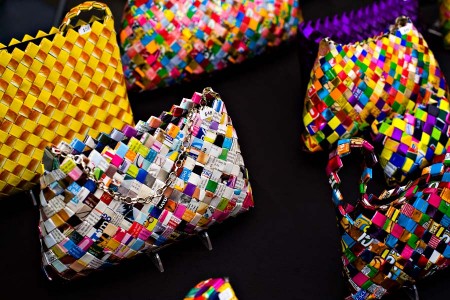Southern California Festivals for 2014
The hottest Southern California Festivals for 2014 are here! It's time to get out your calendar and start marking in your weekend plans. Remember all those things you promised you were going to get around to doing? The summer of 2014 is the perfect time to do them! Check out this list of festivals and explore new foods, fun entertainment, live music, and even homemade crafts and art. No matter what your budget is, or your time-off, there is an option for you in this list.
Southern California Festivals
April 5-6 | Scandinavian Festival of Southern California in Thousand Oaks: Come explore all things Scandinavian: food, traditions, and art. Admission $7.50. April 11 | The Coachella Valley Music and Arts Festival in Indio: Better known to music fans as Coachella, this three day festival will satisfy all of your musical cravings! Admission price ranges depending on show and seat location. Find tickets online. [caption id="attachment_517" align="aligncenter" width="690"] Flickr-Moby[/caption]
April 18-20 | Catalina Art Fair and Exhibition on Catalina Island: This art fair known as CAFE lasts three days and will have a host of vendors showing off their handmade crafts and arts.
April 25-26 | Stagecoach Country Music Festival in Indio: This festival is a must for Country music lovers. This year featured artists include Eric Church, Jason Aldean, and Luke Bryan among other artists. Admission varies depending on ticket availability.
May 8 | WorldFest in Lake Balboa: An earth-day festival to rival all others. Admission is currently $8 but goes up to $12 on May 1st so order online soon!
May 25-26 | JazzReggae Festival in Los Angeles: LA is known for its music scene so it's only fitting that you plan on attending the JazzReggae Festival. Plus, their website is just amazing. Admission tickets go on sale in April.
May 30, 31, June 1 | Balloon and Wine Festival in Temecula: From wine tasting to musical entertainment, not to mention the hot air balloons, this event is a must for your summer plans. Bring your kids and pretend you're in the movie Up. Admission varies but the range is between $15 and $25.
[caption id="attachment_645" align="aligncenter" width="580"]
Flickr-Moby[/caption]
April 18-20 | Catalina Art Fair and Exhibition on Catalina Island: This art fair known as CAFE lasts three days and will have a host of vendors showing off their handmade crafts and arts.
April 25-26 | Stagecoach Country Music Festival in Indio: This festival is a must for Country music lovers. This year featured artists include Eric Church, Jason Aldean, and Luke Bryan among other artists. Admission varies depending on ticket availability.
May 8 | WorldFest in Lake Balboa: An earth-day festival to rival all others. Admission is currently $8 but goes up to $12 on May 1st so order online soon!
May 25-26 | JazzReggae Festival in Los Angeles: LA is known for its music scene so it's only fitting that you plan on attending the JazzReggae Festival. Plus, their website is just amazing. Admission tickets go on sale in April.
May 30, 31, June 1 | Balloon and Wine Festival in Temecula: From wine tasting to musical entertainment, not to mention the hot air balloons, this event is a must for your summer plans. Bring your kids and pretend you're in the movie Up. Admission varies but the range is between $15 and $25.
[caption id="attachment_645" align="aligncenter" width="580"] From Adventure Flights[/caption]
[caption id="attachment_646" align="alignleft" width="300"]
From Adventure Flights[/caption]
[caption id="attachment_646" align="alignleft" width="300"] From Souplantation[/caption]
July 25-27 | Garlic Festival in Gilroy: Vampires beware! The sixth annual Garlic Festival, titled the "Ultimate Summer Food Fair" will offer drinks, food, and local arts and crafts booths. You may consider bringing an extra box of mints...or two. Admission is $20.
July 26-27 | Watermelon Festival in Pasadena: When it comes to summer, there is no better treat than ice-cold watermelon. Join in the fun at the Watermelon Festival. Admission is $8 if purchased online or $10 at the gate. Note that parking is $4.
Which Southern California festivals are you planning on attending for 2014? Unfortunately, this is not an exhaustive list. Is there a festival you love attending that we missed? Share the details in the comments below!
October 3 | Avocado Festival in Carpinteria: Have a love affair with avocados like we do? Then mark your calendars for the Avocado Festival. Admission is free.
Cover Photo of Coachella from Flickr by Tana Ferguson
From Souplantation[/caption]
July 25-27 | Garlic Festival in Gilroy: Vampires beware! The sixth annual Garlic Festival, titled the "Ultimate Summer Food Fair" will offer drinks, food, and local arts and crafts booths. You may consider bringing an extra box of mints...or two. Admission is $20.
July 26-27 | Watermelon Festival in Pasadena: When it comes to summer, there is no better treat than ice-cold watermelon. Join in the fun at the Watermelon Festival. Admission is $8 if purchased online or $10 at the gate. Note that parking is $4.
Which Southern California festivals are you planning on attending for 2014? Unfortunately, this is not an exhaustive list. Is there a festival you love attending that we missed? Share the details in the comments below!
October 3 | Avocado Festival in Carpinteria: Have a love affair with avocados like we do? Then mark your calendars for the Avocado Festival. Admission is free.
Cover Photo of Coachella from Flickr by Tana Ferguson





















